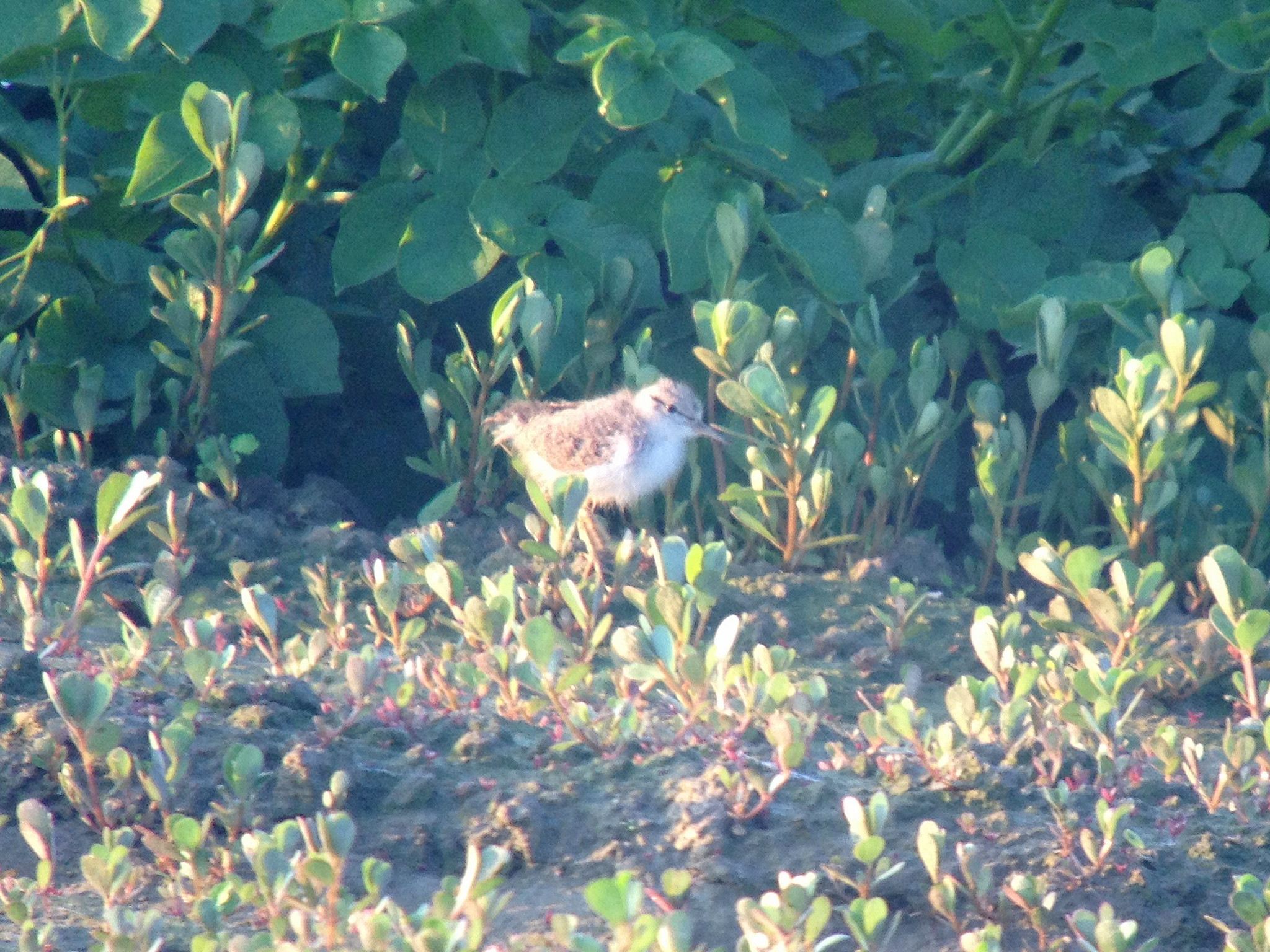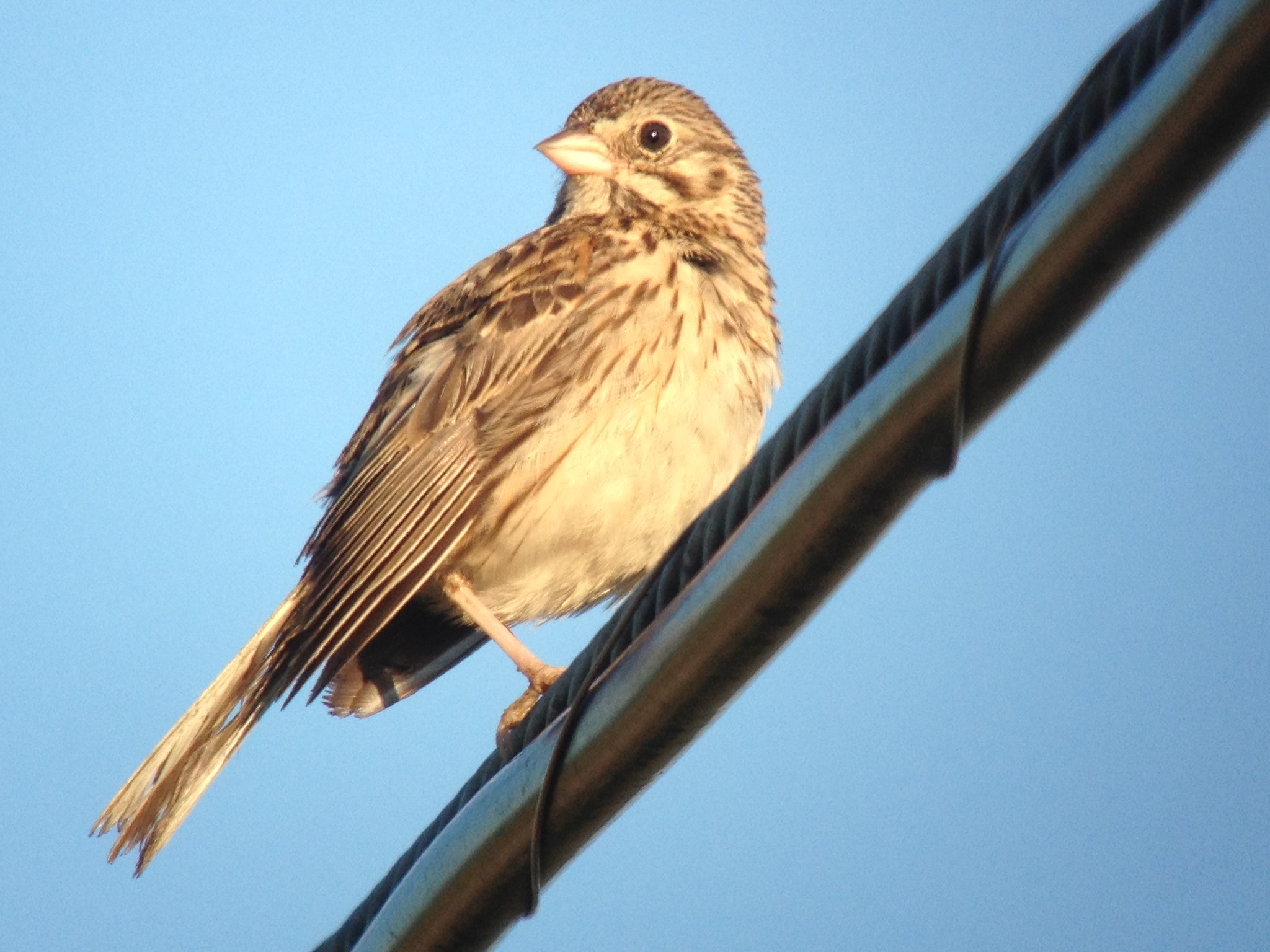 |
| Spotted Sandpiper fledgling, East Meadows, Northampton, July 20, 2015 |
 |
| Indigo Bunting, East Meadows, Northampton, July 21, 2015 |
 |
| Vesper Sparrow, Honey Pot, Hadley, MA, July 22, 2015 |
I have attempted to catch up with more shorebirds and herons/egrets the last few days this week but the conditions have not been great. We have not had enough rain in the immediate area to leave any big puddles and the ones that have formed have been quickly dried out by our temperatures in the 90's. In addition areas to our north and west have gotten much more rain which has swelled the Connecticut River enough to cover any mud flats. Nonetheless there are still birds to be seen but nothing unusual.
As the month of July rolls on I thought it would be time to look at
the tropical season so far and what the future might bring. The long range
forecasts continue to show a below average hurricane season for a variety of
reasons including a strengthening El Nino, dry air over the Atlantic and high
wind shear (among a number of other reasons). So far this season the Atlantic
has featured three named storms with no development expected in the near term.
The highest likelihood of development is in closer to shore where the conditions
are more conducive at this time for tropical development. As fronts pass off
the coast of the U.S. the potential is there for a tropical system to develop
either along the east coast or in the gulf as opposed to development from a
tropical wave coming off of Africa and travelling across the Atlantic. It will
be interesting to see how this plays out over the next few months but overall
the season looks to be below average but that doesn't mean we will not see
impact from a tropical system here...it only takes one storm with the right
conditions to have a impact here. How it will relate to birding is also a tough
question to answer and involves lots of speculation. If a storm were to develop
in close to shore there are a number of birds that could be displaced. Along
the coast of Massachusetts there has been a large (and growing number) of
pelagic birds including a number of rarities. Whale watching trips
and dedicated pelagic trips off of Massachusetts have been seeing large numbers
of Cory's Shearwaters as well as Great, Manx, Sooty and Audubon's Shearwaters
and Leach's, Wilson's and Band rumped Storm Petrels. At times some of these
species have been seen in very large numbers from shore too. A storm moving
through this area could easily displace these birds inland if the right
conditions occurred. The list of rarities seen off the coast lately have
included Fea's Petrel, a probable Yellow nosed Albatross and a number of unusual
terns (including Bridled Tern). The warm water (and the species associated with
it) are there...now we just need a tropical system to occur to move them around
to unusual locations inland. Although the chances are low for a storm to have
the right conditions to bring birds into western Massachusetts at this time, a
more likely scenario would see the Maritimes of Canada (and possibly Maine)
getting a bounty of pelagic birds from a tropical system moving
through.



No comments:
Post a Comment